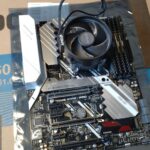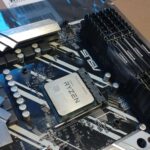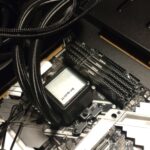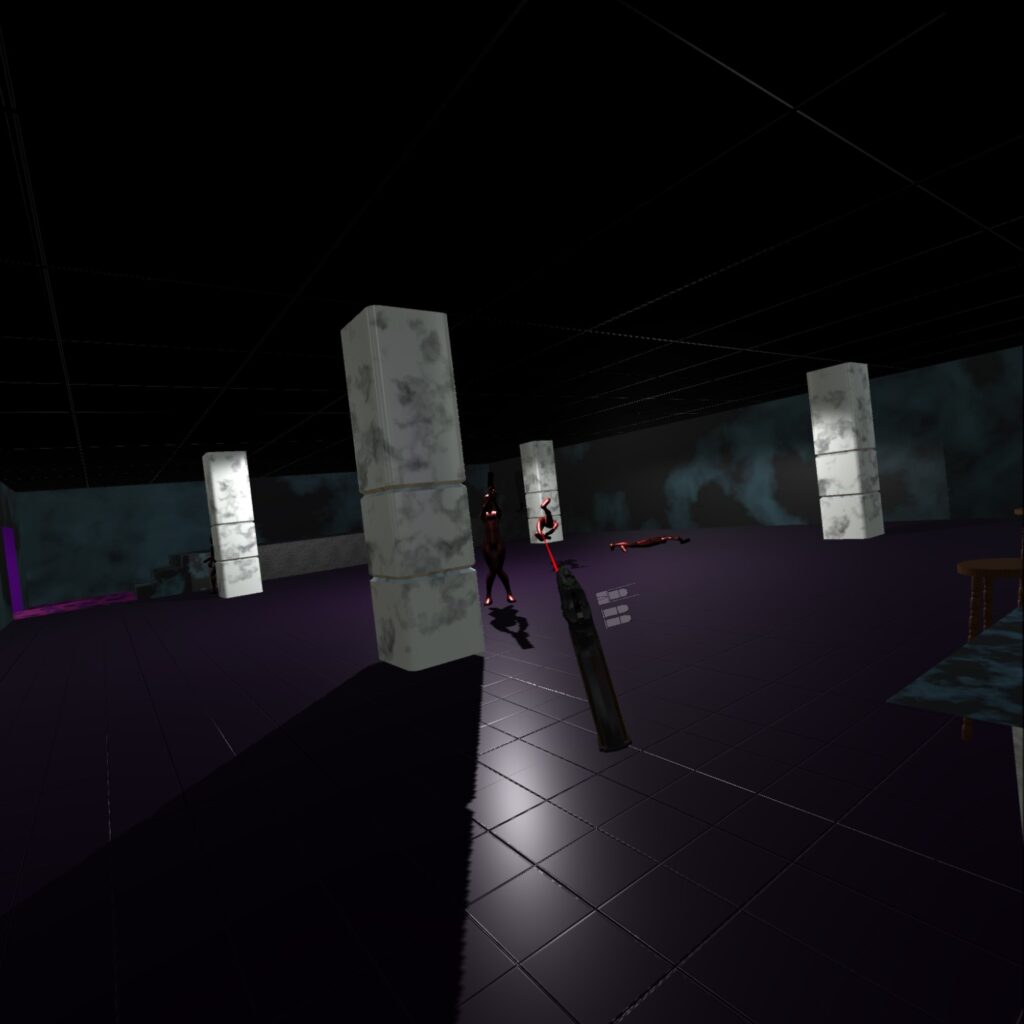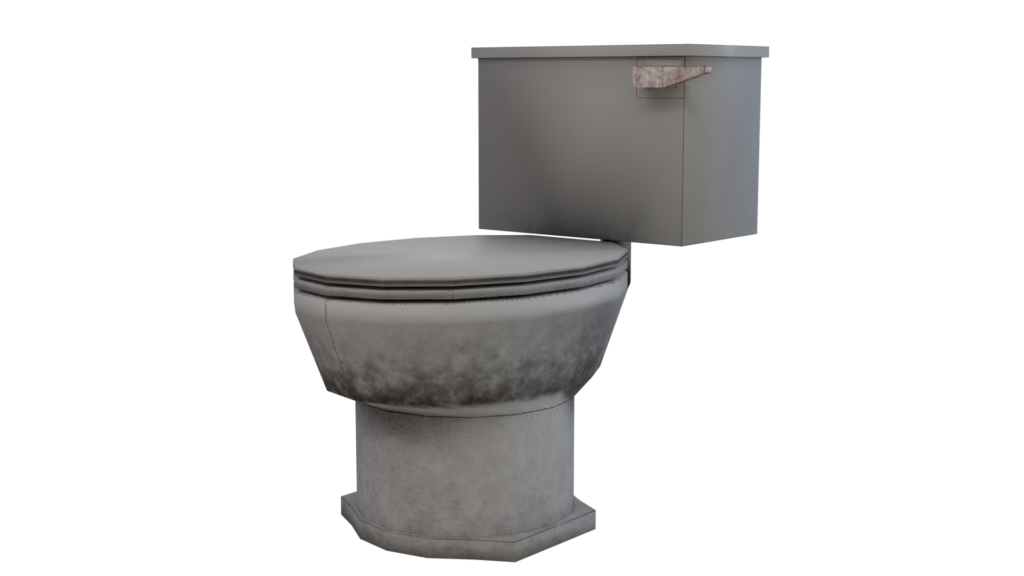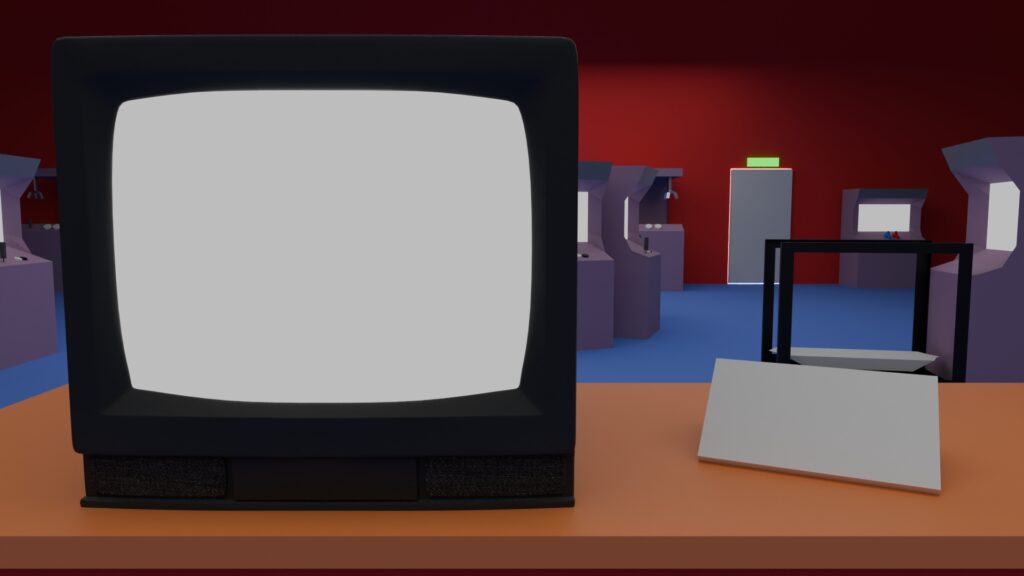Apologies for the lateness of this post. I’ve been quite busy during the past month.
Also, this post has taken longer to write than usual, and as such is filled with corrections and changes. Comments that are striked through are the original text that I’ve left in.
But yes, Global Game Jam happened again, and I made a new game and helped my friend make… His thing.
As you can tell, I made a GameBoy game. In GB Studio, like I said I would. This year’s theme was “Bubble”. I struggled to come up with something interesting around that theme. And due to various circumstances (that I will elaborate on later), I didn’t have much time to brainstorm ideas.
So I decided to make a basic platformer. Which is what GB Studio excels at. It’s very easy to get up and running. The game has the player stuck in a bubble; if the bubble pops, they die. Unfortunately, someone (me) has placed spikes around the place. And so the player must navigate through seven perilous levels.
Initially, my character was meant to have a more significant role. But I didn’t get around to doing everything I wanted to do.
Building the levels was fun. I got to use a program called Tiled, which lets you make levels using tilesets. I made a very basic one with platforms, spikes, and a couple of other bits. It worked well enough for making levels. Tiled itself takes a bit of getting used to. I jumped into it without much of a tutorial, but I got the hang of it quickly enough. Making a test game before the jam started definitely helped getting me prepared.
Finally, I wanted to note that I got the game working on my Analogue Pocket. Which I think is neat.
You can play the game below.
Hot on the heels of finishing that, I immediately began helping my friend with his game. Which he hadn’t started yet. 18 hours before the deadline.
Using Godot, of course, we cobbled together a bunch of poorly made assets that were vaguely Frutiger Aero-related and slapped them into a level. Combine this with the code from a previous GGJ game we made, “If Only The World Was So Black And White“, to handle player movement, and you get… This.
It’s an unfinished mess, but you can check it out if you want. My friend really needs to use his time better. At least I had an excuse for my lack of time.
Now for the reason why I had as little time as I did. Well, at the beginning of that week, I finally received the last of the replacement parts for my PC, the PSU specifically. The moment it arrived, I decided to get cracking at swapping things out. I’ll get into those details in the next section. Regardless, it took 3 days to finish doing that. Then I got one day of solid development in, where I made the player sprite and started work on building the early levels.
And then Storm Éowyn hit the day after. Knocking out my power for the whole day. I didn’t have much water either, making things even more difficult. Unable to use the computer, I decided to draw the levels on squared paper.
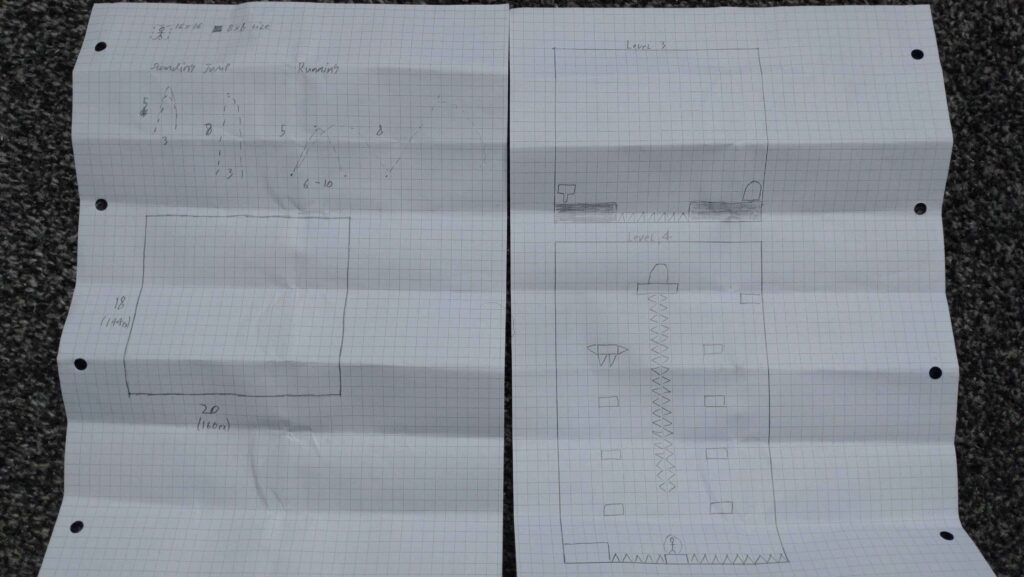
I didn’t get power again until the day after. At which point I resumed development up until the point where I pivoted to helping my friend.
Freezing half to death, having little to no water, and having no way of charging my devices made me realise I should spend a bit of money on emergency supplies. As such, I bought a wind-up torch & radio that can be used as a power bank. It didn’t cost too much, but hopefully it’ll work when I need it.
Rebuilding My PC
My previous PC case was old. It was a Lian Li case from 2012. From when I built a PC that I used at Uni. The fans on it were failing, with the rear fan requiring me to stick something between the blades and kickstart it back into moving. Plus the rattling and noise of it. The front panel was held on with tape. And the LEDs were failing too. So I decided last year that I should swap it out for something newer. A Fractal Pop XL Air.
Besides that, I was now using a Ryzen 7 5800X3D but still using the stock cooler from my Ryzen 7 2700. Which was pumping out heat to the side of my case and generally being hotter than I was comfortable with. Which led to me considering an AIO water-cooled solution. I decided to get a Be Quiet! Silent Loop 2.
After ordering those two parts, however, I started having issues with my PC, and after some time, one of my SSDs disconnected. The one I was using for gaming specifically. Initially, I replaced the drive with a newer one and transferred the data to it. Although in doing so, I noticed that the drive was actually fully functional once connected up with USB. Either way, after the transfer, there were a couple of weeks of little to no issues. Until it started failing again.
No matter what cable I used or SATA port I connected it to, it wouldn’t work. But USB connection did. The only consistent factor was the power cable. Seeing as the PSU was a number of years old, I decided to replace that too. And got an 850W SeaSonic PSU.
Beginning the 3-day process, I removed the motherboard from the case and removed the heatsink from the CPU. Then cleaned all the old thermal paste off. Getting an AIO on wasn’t the easiest thing, but the mounting process was easier than the previous heatsink. Getting it bolted down properly was the harder part; suspension on the screws made it more difficult than it probably needed to be. Mounting the fan to the new case was no problem at all.
Following that, the PSU fit in snugly. But after that were cables. This is where the Fractal case is less than great. It’s a massive pain to get through the slots, particularly the thick cables going to the PSU. But I managed.
Unfortunately, my motherboard is so old that it doesn’t have any ARGB headers, just RGB ones. Meaning that the lights on the case don’t turn on. It’s not a huge deal for me, however. The lack of USB 2.0 ports on the case, however, was a problem, as my capture card requires it. Without it, it crashes after 15 minutes. This issue has been fixed since, with the purchase of a separate USB bracket.
Once everything was together, I connected everything up and turned it on. And it worked… For the most part. Some of my drives were missing. I spent a bit of time disconnecting and reconnecting them until concluding that one of the SATA ports was dead, the power cable for one of the drives wasn’t connecting properly, and the cable may also be busted. I got a new cable from my dad and swapped the power connector. Then used the last free port. Then it worked. And I’ve been using it since.
I’m Making An RPG (Which I Promised I’d Never Do)
Following Global Game Jam, I was itching to keep toying around with GB Studio. And then I remembered how much I wanted a game that was like Dungeon Meshi. With a bunch of monsters, cool dungeons, weirdness around things like magic (Mana sickness), and so on. Now obviously, it’s not possible to put all of that into a GameBoy game. So I settled on making a Roguelike.
Specifically, it would focus on the battle, rest, and food balance. Instead of using levels, it would use strength. The party strength would increase if the player won fights, kept themselves well fed, and rested often enough. But it goes down if the player rests without eating or with extreme tiredness. There’s also a stamina bar that indicates how much a player can move around before they start to feel the effects of fatigue.
I’m trying to make it a dungeon crawler, but I’m struggling with the generation element of it. With the unique way GB Studio handles scripts, it’s very difficult to have a lot of control over something like that. I thought maybe I could use tile swapping in order to make it but ran into the tile limit immediately. So I’m looking into alternatives. I’m now building levels manually. I need to make about 50 of them.
Tile swapping is a very powerful tool in GB Studio. I use it for multiple HUD elements. I found it to be easier to use than handling it via actors. Unfortunately, the documentation for GB Studio is awful, so finding examples for how to use tile swapping effectively is difficult. Thankfully, someone on GitHub put me on the right path.
Menus for the game ended up being difficult to manage. Initially I used the built-in menus, but then I realised that they paused the game every time they were pulled up, and I thought that would be a problem for updating things and animations. Then I built my own menu, but the performance took a massive hit because I was updating multiple things every frame. Following that, and a considerable amount more research, I settled back with the built-in menu, with a better understanding of how the loops work.
The amount of nested if statements concerns me. There’s no lookup tables or dictionaries, so you have to use if statements for any comparison. But the more annoying is the inability to dynamically make options for menus. The amount of menu items has to be set manually, along with what each option says. And then you need to use an if statement for each option. The problem is that I want to be able to swap out party members with different classes and skills. But I can’t update the list of skills. Instead, I have three skill slots and then use an if statement for the choice they made in the menu, and then another series of if statements for what skill is in that skill slot (which you can only find out by choosing that menu option), and then another menu asking the player if they want to use the skill, and then another if statement for the selection on that menu.
Complete madness.
I also rewrite chunks of code over and over in different places, because I can’t move it out into a reusable function.
Turns out you can move code out into scripts, with parameters and such. This has made my life so much easier, as I can now reuse code and only pass along the relevant variables. For example, I’ve moved the skill system into its own set of scripts. One for the menuing and others for each character class.
GB Studio is fun if you want to make a simple game. But once you get into more complicated designs, it gets very challenging to work with quite quickly. You can export the engine as code and modify it that way. I haven’t given it a shot yet, but if I were serious about fixing the shortcoming of the engine, I might look into it. For the time being, I’m going to keep trying to get it to work.
Twitch’s Bullshit Hour Limit
Twitch, in their infinite wisdom, have decided to impose an extremely arbitrary limit of 100 hours of footage that can be archived on Twitch. How far above the limit was I?
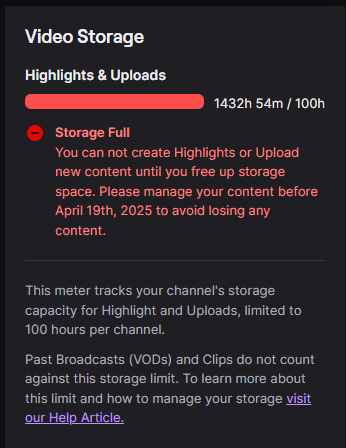
1300 hours above the limit.
This means that all the collections on my Twitch page need to be moved on to YouTube, and then I need to delete all of those collections. Currently, I have moved most of those playthroughs. Some stuff like the Yakuza games, Death Stranding, Ghost Of Tsushima, and Tales Of Arise; have been removed without being moved to YouTube. So those are gone. The remaining collections are still up as of time of writing this, but will likely be deleted by the time this has been posted. All the collections have been deleted, and playlists of the moved videos will be made on YouTube soon.
As you can imagine, I am not happy about Twitch giving me more work to do. But also, I’m an Amazon Prime (Twitch Prime) user. Meaning I give these chucklefucks money. But everything that they’ve been doing as of late has been making me seriously consider not paying for this trash service. Screw you, Twitch and Amazon.
SMG Model Release
This is the same SMG from 7DFPS 2024, but now textured and with some alterations to the animations. Feel free to use it on any of your projects.
Plans For The Rest Of The Year
Jan 2025
Fix PCGlobal Game Jam
February & March 2025
SMG Asset Release
Spring 2025
- Weapon armature Blender tutorial
- Video about the Project Fighting Styles
June 2025
- Cybersurfer demo, rebrand, new title
- GB Studio Dungeon game demo release
Summer 2025
- Cybersurfer early access release?
- Untitled 2D Godot game
Autumn 2025
- 7DFPS prep
I just wanted to give a slight update to the plan that I made in my previous post back in January. Things are progressing well so far, although this new GameBoy project has definitely put a spanner in the works in regard to Cybersurfer’s development. But progress is being made on that front.
Anyway, I will post again soon. Hopefully, I’ll have some good news to talk about.
-Adam

